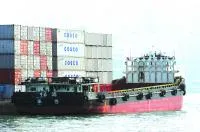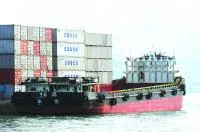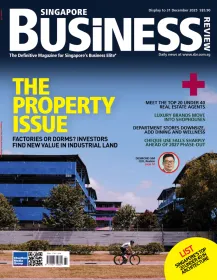Feature
Why ban the financial institutions now?
Why ban the financial institutions now?
Not all the cranes dottting Singapore’s Marina Bay skyline are building the the integrated resort. Many are, in fact, building ever more grade-A office space in the financial district and beyond. So much new supply is coming online in Singapore that analysts estimate the vacancy rate could hit an historic high of 25 % by 2011. That, coupled with the current downturn and a desire to shift to cheaper localtions like Changi, has seen CBD rents fall by as much as 25 %. Tay Huey Ying, Director of Research and Advisory of Colliers International said demand for office space contracted for the third consecutive quarter in 2Q 2009 by 248,000 sq ft. “Firms battered by the financial crisis continued to downsize and give up their office space. Coupled with the large impending supply, rents continued to free-fall in 2Q 2009 to average at S$6.73 per sq ft per month for Grade A offices in the CBD. For the first half of 2009, average rents of Grade A office space in the CBD have fallen some 41.5%, bringing rents back to mid-2006’s level,” shes said. So what does this mean for CBD office rents and how should potential tenants assess the market?
CBD rents under pressure
Not all the cranes dottting Singapore’s Marina Bay skyline are building the the integrated resort. Many are, in fact, building ever more grade-A office space in the financial district and beyond. So much new supply is coming online in Singapore that analysts estimate the vacancy rate could hit an historic high of 25 % by 2011. That, coupled with the current downturn and a desire to shift to cheaper localtions like Changi, has seen CBD rents fall by as much as 25 %. Tay Huey Ying, Director of Research and Advisory of Colliers International said demand for office space contracted for the third consecutive quarter in 2Q 2009 by 248,000 sq ft. “Firms battered by the financial crisis continued to downsize and give up their office space. Coupled with the large impending supply, rents continued to free-fall in 2Q 2009 to average at S$6.73 per sq ft per month for Grade A offices in the CBD. For the first half of 2009, average rents of Grade A office space in the CBD have fallen some 41.5%, bringing rents back to mid-2006’s level,” shes said. So what does this mean for CBD office rents and how should potential tenants assess the market? According to a research note from Credit Suisse, CBD rents for a grade A building may fall a further 14 % to $9.20 by the end of this year and will keep falling until the bottom out at $7/sq ft in 2011.Then there is the ‘shadow space’, which is when the tenant sublets, and there is a lot of supply coming onto the market as companies downsize central business district operations. Empty offices According to research from CB Richard Ellis, the weakening of prime office demand during the last quarter could leave the new office space in the works empty for the short term at least. “Singapore is home to the Asian headquarters of a large number of MNCs and consequently saw the further weakening of prime office demand during the quarter. Prime rents have now fallen 46.6% from the peak recorded in the third quarter of 2008, and occupancy rates will continue to face pressure from substantial new supply. Singapore has some 7.98 million sf of new office space in the development pipeline between now and 2013 and it seems certain that for the short term at least, supply will continue to outstrip demand,” said a CB Richard Ellis spokesperson.
Will SingTel's soccer grab crush Starhub?
Singtel may have won the screening rights for the English Premier League soccer, but will it be worth the price? In terms of recouping the rights fees in subscription revenues, most analysts agree this is a lousy deal for SingTel. Analysts estimate the telecom company has agreed to pay around $350 million over three years, but the firm says it plans to charge subscribers just $23 a month. It would need to sell 4.2 million subscriptions to recoup its investment, which is more than there are households in Singapore. The market for cable subscriptions stands at just 630,000 as at June 2009, and of that Starhub had 530,000, of which half are reckoned to subscribe to its sports channel.
Will Keppel samba its way to the bank?
If you were in charge at Keppel Corporation, now would be the time to take a cue from Tom Cruise in Jerry Maguire and yell at the top of your voice, “Show me the money!” One of the largest offshore and marine groups in the world finally has the go ahead for a rigs costing, an eye-popping US$1.2 billion for Skeie Drilling to go ahead. And Lim Siew Khee, an analyst from CIMB-GK believes that it is unlikely for the three N-class jack-up harsh environment rigs for Skeie Drilling to be cancelled given the positive development with the restructuring and consensual agreement reached with bondholders. And that isn’t all, there is news that Keppel and WTorre are currently in talks surrounding the possible acquisition of Estaleiro Rio Grande (ERG) shipyard in Brazil. Now what is the big deal about ERG that makes Keppel wants to take over the shipyard? Well, according to Lim, ERG is designated to build eight FPSO hulls for Petrobras which could potentially add a sweet US$4 billion (or US$500 million per hull) to Keppel’s order book of S$9.5 billion. Add the $1.47 billion from Petrochina brought about from the sale of SPC which has strengthened Keppel’s cash position, which Lim believes is likely to be deployed for Infrastructure M&As and may be preserved as buffer for potential aid to rig customers with financing difficulties. The recent equity raising has also alleviated funding overhang for Keppel Land. While Keppel Land has indicated that part of the proceeds could be used to pursue strategic acquisitions, we believe that any potential M&A is still in the infancy stage. In the near term, we see the bulk of the proceeds could be channelled to development capex and capital-management initiatives. Recall that office developments in progress include Marina Bay Financial Centre 1 & 2 and Ocean Financial Centre. Sentiment in the sector has since recovered, with transaction volumes improved dramatically over the last four months. Successful new launches in both China and Singapore could further augment Keppel Land’s balance sheet health. This may just make the management from Keppel Corporation much happier than a group of eighteen-year-old boys left unsupervised at the Playboy mansion. F&N on a sugar high Frasier & Neave, or F&N for short, has hit a sweet spot not only for their famed canned but also for property. According to analysts from DBS Group, recent launches by the Group have met with overwhelming response in terms of units sold and ASPs. The latest being 8@Woodleigh, which sold 90% of the units over its soft launch last weekend at ASPs of S$770 per square foot, 10% above industry observers’ expectations. Higher-end projects such as Martin Place Residences also met with keen response, at ASPs between S$1,450 per square foot to S$1,700 per square foot, much higher than the S$1,250 per square foot that industry analysts had anticipated.And it isn’t only in the local property market that F&N is seeing significant growth. Recent positive property sentiment in China could also bode well for the corporations developments in the People’s Republic.Apart from overwhelming property sales, Frasier & Neave also has a current landbank of 930 attributable units in Singapore which according to analysts from DBS Group is relatively low. The same analysts from DBS Singapore Research Team say that the F&N Group will be looking to acquire land, particularly from URA’s Reserve List GLS. This possible acquisition of land could be a catalyst for the counter, if it materialises, as it first of all signals a positive on-the-ground view of the property market and will prompt an upward revision on RNAVs. Strait and Narrow Straits Asia Resources (SAR), the first pure mining company to be listed in Singapore, has seen its share price more than double since March which is in tandem with the resurgence of oil prices. The impact of global economic stimulus plans has started to flow into the real economy, leading to tighter energy markets. Improvements in fundamentals bode well for SAR, as firmer coal prices will boost its revenue. Management holds the view that energy markets will continue to tighten in the second half of this year and is optimistic that its 2010 financial year output will be priced at more favourable levels than recent spot prices of around US$60 per ton.
Property's double act
The great financial recession may have knocked the economy for six, but the residential property market has seemingly defied all logic and staged a dramatic comeback.
No more Mr. Kiasu
In the popular imagination, the average Singaporean is a cigarette smoking, white singlet-wearing, 45 year old ‘uncle’ who wears flip flops and drinks Tiger with his ‘kakis’ at the local hawker centre. But thanks to a survey done by stockbroker CLSA, we now know that Mr Singapore is, in fact, under 40, hankers for a BMW rather than a Mercedes, has a diploma level or higher education, and still believes property makes the best investment. But the global financial crisis has not been kind to Mr Singapore, who saw his average income decrease by 10 % over the year and whose key concern is a rising foreign population that may lead him to lose his job. In the same survey done in 2007, most Singaporeans were worried that rising numbers of foreigners would increase the cost of living.
Shipping firms feel seasick
With Singapore’s economy recovering one would have thought that its shipping companies would have been sailing into calmer waters. Not so, as the results of shipping companies has shown that the perfect storm in shipping rates and volumes continues to batter results. Indeed, Singapore’s largest shipping company, Neptune Orient Lines, continued to flounder on even weaker cargo rates. To June this year cargo rates were down 28.9 per cent year on year and not surprisingly this led the company to report a 38 per cent revenue slump on August 7 which pushed it deep into the red. If there was a silver lining it was that the rate of volume slowdown reduced, albeit marginally, but the reality is shipping volumes in Asia are just not picking up across the board. Faced with an oversupply of ships, this continues to put pressure on shipping rates. So what’s going on?
Empty vessels don't make waves
With the shipping industry in the doldrums, we speak to Raymon Krishnan, President of the Logistics & Supply Chain Management Society and Alex Schulz from Safe Haven Maritime discusses the increase in laid up vessel at OPL.
En-blocs struggle as market rebounds
Next to winning the Toto, having your apartment go on en bloc is the next best thing every Singaporean dreams of.Those dreams may now be getting a little closer as major developers have rushed back into the market from the middle of this year. Developers snapped up $4.51 billion of property to add to land banks in the three months to September, which was more than the preceding year combined. Not surprisingly, it is still well below the mid term peak of $12.8 billion reached during the height of the market boom in third quarter of 2007.
And the recession drags on
The newspaper headlines in October may have screamed that the economy had finally turned the corner with the first year on year growth since it emerged from recession. But beneath the apparently good numbers was the grim reality that many of Singapore’s industries remain mired in an intractable recession.
Rebuilding trust in Asia
RBS Head of Trade in Asia tells us that trust is the key to rebuild trade. As the credit crisis impacted Asia’s supply chains, trust was badly damaged. Global banks, with their cross-border expertise and trade finance tools, are playing an important part in the rebuilding process. Estimates suggest that between 20,000 and 30,000 SMEs went out of business in southern China during the peak of the global slowdown. That pattern, if not the magnitude, was repeated right across Asia. Not surprisingly, trust evaporated as buyers and suppliers questioned each other’s ability to deliver their side of the bargain.
Hiring for keeps
Streamlining the recruitment process to get the best person for the job is a continuing challenge to most firms. There is a lot of time and money involved in hiring personnel, and if the ones chosen turn out to be the wrong employees, in firing them. Recruiters either hire the wrong employee or miss out on the right ones because they have poor or no recruiting and hiring strategies. Many times, their selection standards are unclear. Thus many organisations coming from diverse fields painstakingly undertake this critical aspect of the business and specialise in creating hiring techniques and procedures to lessen the risk. Holistic method The process of Executive Search is an opportunity to create a blueprint for an organization’s direction. It could be a make or break for the company, with some leaders able to turn a faltering company around or sustain a great run, as others bury their organisations deeper into the pit. Knowing that companies need to tap the right leaders-those who are dynamic and possess the right vision-PotterHouse, initially organised as an executive search and selection firm, uses performance appraisals not only to assure that the candidate selected can truly deliver but also to determine areas of improvement. But to achieve breakthrough solutions and maximum production out of the targeted results, PotterHouse expanded its services to offer a holistic method of matching both employers and candidates. “PotterHouse was established as more than just an Executive Capital Acquisition firm. In line with our Company’s values, we have also developed an Outplacement Consulting Specialty,” explains Audrey Cheang, Director, Professional Services of Potterhouse. “With our expertise in talent acquisition, management and retention process as well as planned talent attrition process, we support as subject matter experts to partner employers through each of those processes so that their staff can continue to add good value to their business,” she adds. More importantly, PotterHouse believes that people are not here by chance. That people are formed for a special reason, thus they are one of a kind. PotterHouse emphasizes that personally knowing an employee is the best way of measuring how they could perform and their importance to their operations. “This is not to say that resumes are unimportant in the recruitment process as they provide the foundation of the discussions and behavioural interviews. But not only must it accurately detail the candidate’s past experiences, education and successes, recruiters must also explore beyond the written qualifications since some applicants have reached their peak in performance for a job category and whose performance may have plateaued or be on a downward spiral,” Ms. Cheang points out. While PotterHouse sees to it that candidates meet the basic qualifications before they are considered for interview, these qualifications are not carved in stone as many qualified candidates often do not fit the role they are applying for. Ms. Cheang warns that companies should avoid the pitfall of looking for someone with more skills beyond what is necessary as positions are often left vacant because of this. “At times organisations can satisfy themselves with the best candidate available at that point in time,” she points out. PotterHouse conducts Executive Coaching through Ms. Cheang who holds a Master Coach Certification from the Behavioral Coaching Institute in the United States to assist clients develop talents who are consistently resilient and successful in all they do and fit in with the company’s clients. “With clients, we strive to continuously enhance our working partnership by working with speed and planned accuracy to provide optimal human capital solutions,” says Ms. Cheang. “But we don’t tell a client that this is the ideal candidate,” Ms. Cheang explains. “Rather, we show them a particular candidate’s strengths and see if that is what they are looking for. We give them a feel of how that candidate can add value to their business,” she emphasizes. Having matched many right candidates with employers while upholding values of high integrity, prompt response, and feedback as they explore all avenues to assist both clients and candidates is the hallmark of PotterHouse.








 Advertise
Advertise














Commentary
Why we keep spending millions on bollards whilst accidents keep rising
Singapore’s digital confidence in the new retail era